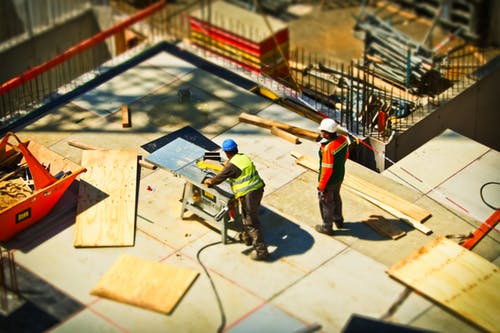Construction companies quite literally build up a large portion of the U.S. economy. The industry accounts for more than seven million jobs and $1.3 trillion in construction projects every year. Embracing new technology plays an important role in the success of this industry.
As technology trends make construction work more efficient, more businesses thrive. In 2020, construction companies can expect the following trends to shape the industry:
Using Artificial Intelligence to Streamline Building
Artificial intelligence, or AI, has radically transformed many industries, and construction is no exception. The efficiency of autonomous construction equipment often saves money for construction companies. Businesses now use robots for everything from lifting and placing concrete blocks to laying road materials and demolishing buildings.
By using AI, construction businesses can not only cut down on costs, but they can ensure jobs are done quickly and accurately.
Investing in Cost Estimating Software for Greater Accuracy
Adopting cost estimating software, another trend in the construction industry, allows businesses to come up with estimates for their clients with more efficiency and accuracy. The best construction estimation software uses vast amounts of data to determine the current price of each material needed for a build. They also factor in the cost of labor and other expenses associated with a project.
Using a cost estimation helps projects run more smoothly, finish on time, and at lower costs. Expect to see more businesses offering professional cost estimation to clients, making their businesses more competitive.
Emphasizing Sustainability for Consumer Demand
Trends in construction are not all about cost-saving measures or speeding up builds. Modern consumers also value sustainability. The construction industry is responding to this demand by using more sustainable materials and processes.
Many consumers worry about global issues like climate change, but they also care about the health of their own interior spaces. To address these concerns, builders are adopting all types of greener practices by:
- Using materials from sustainable producers.
- Using recycled or upcycled materials.
- Working with energy-efficient equipment.
- Following LEED (Leadership in Energy and Environmental Design) standards and achieving certification.
- Designing buildings and spaces that are more environmentally sound and healthy for residents and occupants.
- Designing projects around natural areas.
- Reducing waste with more streamlined processes, including using cost estimation software for more accurate supply lists and purchases.
As consumers demand greater sustainability in a wide array of industries, expect construction to follow suit and offer services, materials, and buildings that meet those needs.
Improving Use of GPS
Global positioning system (GPS) technology has changed everyday life in profound ways. The impact of this technology reaches much further than making an unfamiliar drive much easier. Another construction industry trend is utilizing GPS to streamline operations.
Construction companies can use GPS to make work more efficient in a number of ways. For example, GPS makes surveying a worksite faster and more accurate. Also, managers can use GPS to keep track of fleet vehicles, drivers, and materials. Even lost or stolen materials and equipment can be successfully tracked down thanks to GPS trackers.
A Rise in Prefabricated Building Materials
Right now, modular and prefabricated builds are more popular than ever. Purchasing a prefabricated building means ordering a completed or near-completed structure, and having it moved to the building site for installation.
Construction companies can also make use of prefabricated materials and incorporate them into any build. This practice began many years ago, but dropped off after the 2008 recession. Research indicates that this building strategy is on the rise again and will continue to grow in the coming years.
When pieces are designed and constructed to fit together, jobs can be completed with more efficiency and fewer mistakes. Materials made in a factory also save costs and improve safety. They are created by a uniform process to minimize errors and risks.
While some trends come and go, others can permanently change an industry. In 2020, watch out for these trends; they may prove to have staying power in the industry by lowering costs, increasing efficiency, and promoting sustainability.











